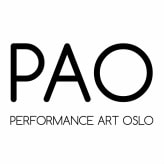Interview with Liina Kuittinen
 Photo: Kristian Jalava
Photo: Kristian Jalava
7.- 9.9.2017, Kitchen, bed and living room floor in Helsinki, Finland
Q: Why / when / how did you start to work with performance, what is your background, how did you arrive at doing performance?
Firstly, I studied sculpture and painting, but was never really satisfied with those mediums and kept struggling. Now when looking back, it is quite obvious that there was always some sort of element of performance in my work. For example, I would go back and change the works during the exhibition or would make a small scale sculpture which was meant to be used as a game and then I mounted another sculpture for just one afternoon and it took over the whole drawing class etc.
It took me quite a long time before I dared to try performance, even if I knew already for quite some time that I probably should go in that direction. By coincidence, I ended up working with people active in the field, so I got the chance to see a lot of performance art at small scale events. After seeing how performance artists were working, it became possible for me to bring my own art into a live situation.
I found out that the intensity and temporality of performance made sense to my thinking and way of being. Finally, I did not have to constantly criticise the form, but I could concentrate on what to do with it instead.
Q: What is your process like when you make a performance, from idea to actual work?
I consider my practice, or at least the latest part of it, to be one process and separate works are just glimpses of the whole. So the idea stays the same, only the pronunciation differs a bit. There is usually some detail, like a piece of music or sentence or some specific gesture that for some reason keeps haunting me. Then I know that there is something I should pay attention to and start to collect material around that detail.
I like to spend quite a long time working with each performance and want to avoid a too hectic working rhythm. Lately my work evolved around duration and materiality. I consider the artistic process also a material with its own duration that I want to respect.
Q: Can you tell about your latest project?
My latest work is called Maa’n naama/ Earth’s face. It was produced as part of a group exhibition in Helsinki. Maa’n naama was about reproduction and death, but also about what it means to change the posture from standing on two feet to being on all fours. It was about repetition and mutation and the sound that the eyelid makes when it is stretched and released with two fingers. It was also about the sliding borders between nature and culture as well as the materiality of language and distortion in sound because of broken speakers and about a rather long XLR cable and love, among other things. I used mainly my own voice, two sentences, one song and my own body. I also amplified the sound of clay, so the clay and its ability to produce sound were participating in the performance also. The score for the piece was quite exact but left a lot of freedom for execution.
Q: What role does performance art have in your life / artistic praxis? Do you also work within other fields, like installation, sculpture, drawing, and other expressions? How do they influence / inform each other?
Performance is for me a material thinking process. Performance is to set one’s body in relation to the world again and again. In performance the body is thinking. For me, performance is my main medium and for example if I work with installation it is about extending the performance to other materialities.
Q: With what kind of form / material do you express yourself and use in your work and how did you arrive at using this material?
Duration is something that I have been working with lately. The piece called Beneath the Beach was presented in a gallery space during an exhibition over three weeks. During some of the days, I performed as part of the installation and the duration of each of these performances varied between nine minutes and two hours. The piece was kind of escaping the viewer, so that the audience could not really witness the whole work, but only a small segment. I wanted the structure to correspond with our very limited understanding and perception of the world.
With duration I do not mean only the length of my performances, but thoughts about time being a combination of layered durations has been in the center of my process lately. In practice, I have combined performance and duration of the body with other materialities and their durations. Beneath the Beach was a combination of performance and sediment material that I brought from the sea to the gallery space. The lifespan of mud is part of geological time which goes far beyond our experience. The question of perception of time is essential in the age of environmental sorrow that we are now living in. Humans are forced to reconsider their relationship not only to other creatures, but also to the inorganic environment. Changes in ecosystems and in climate happen suddenly, but the processes leading to them are slow and beyond our daily experiences of time. I consider performance as a possible place for renewing the perception of time and duration.
<< Back
